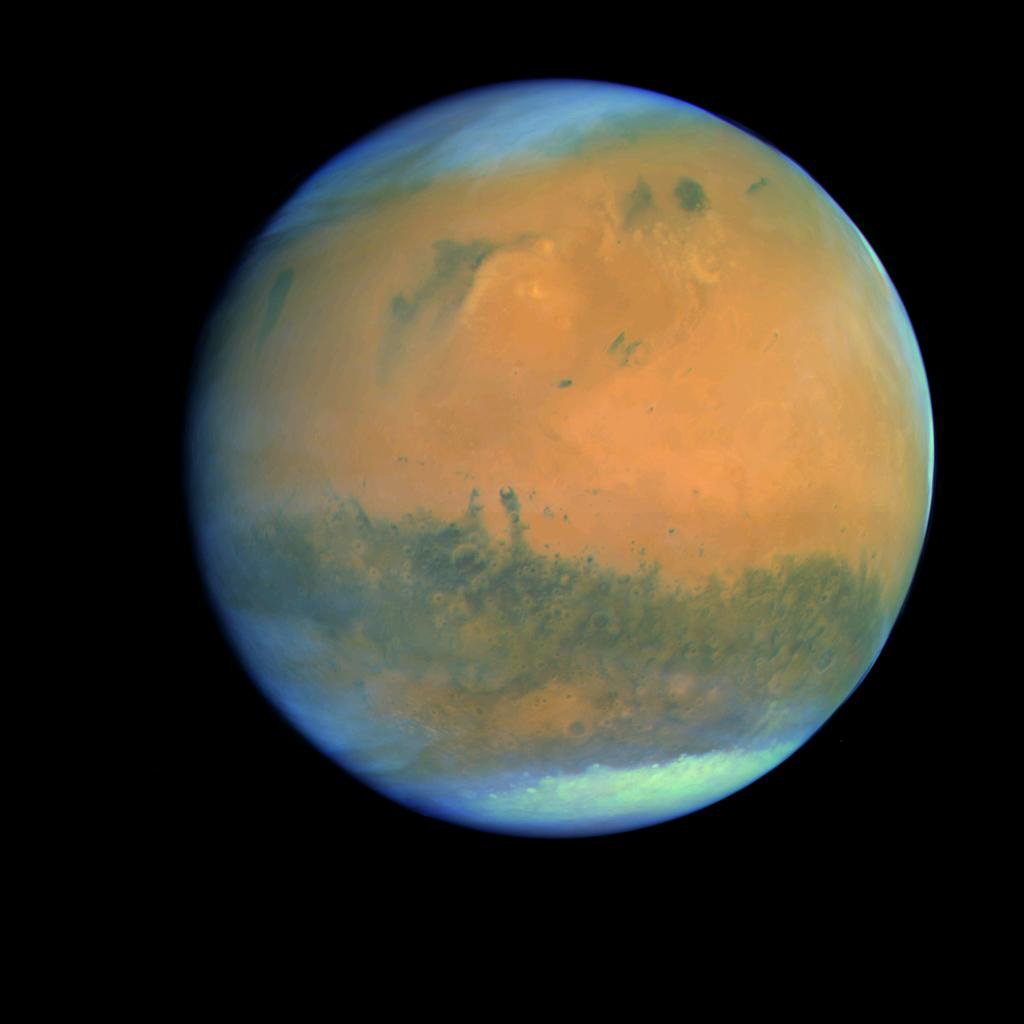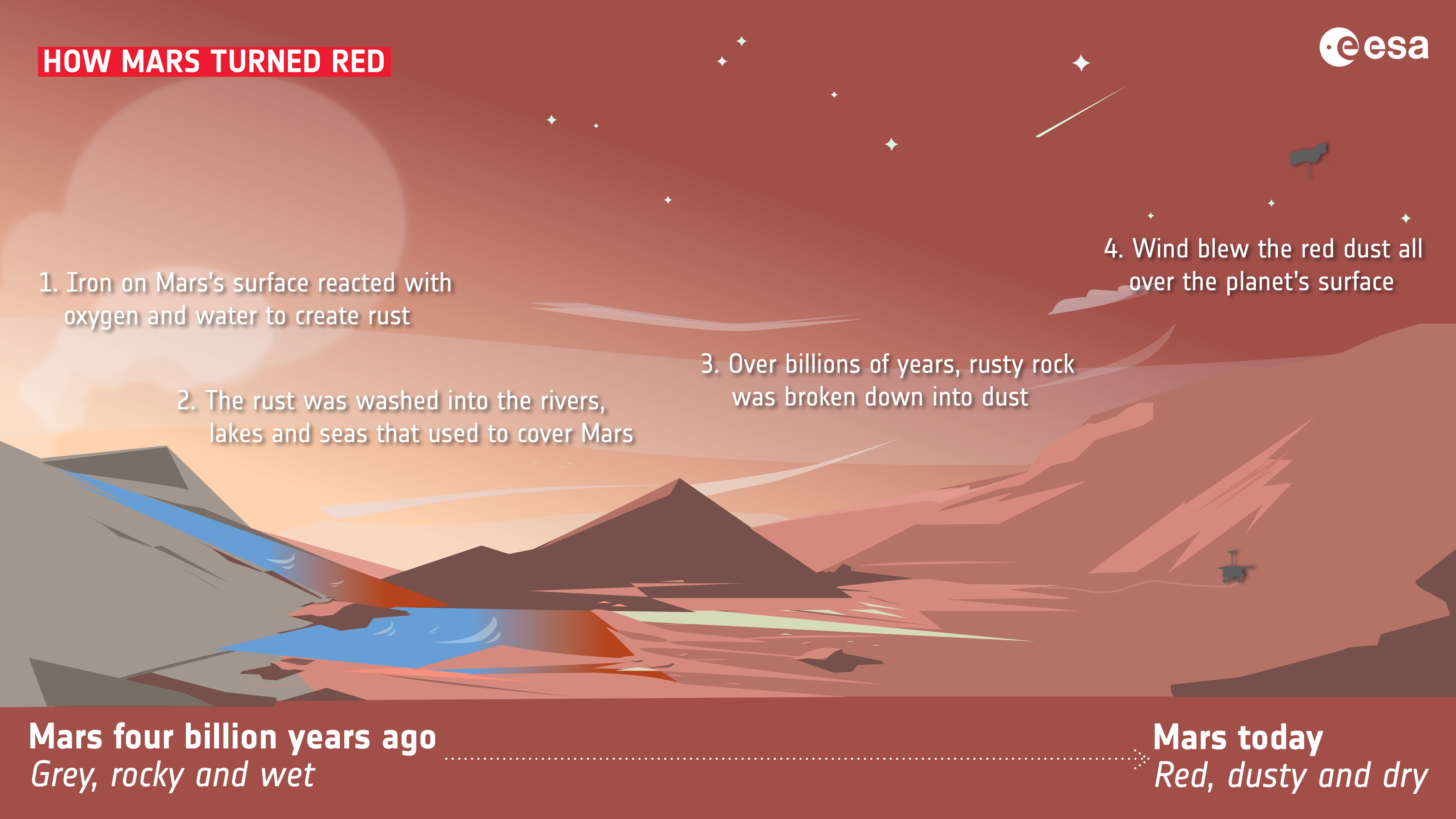New research suggests that Mars has been red for millions of years longer than previously thought.
The study has “transformed” understanding of how the “red planet” developed its distinct hue, say American scientists.
Previous research revealed that the red color is due to rusted iron minerals in the dust.
Scientists say iron bound up in Mars’s rocks has at some point reacted with liquid water, or water and oxygen in the air, similar to how rust forms on Earth.
The rusty material – iron oxide – broke down into dust over billions of years and was spread all around the planet by winds, a process that continues today.
But iron oxides come in many varieties, and the exact chemistry of Martian rust has been debated because how it formed is a window into the planet’s environmental conditions at the time.
And scientists say the question of whether Mars has ever been habitable is closely linked to the debate.
Previous studies of the iron oxide component of the Martian dust based on spacecraft observations alone did not find evidence of water contained within it.
As a result, researchers concluded that the type of iron oxide must be hematite, formed in dry surface conditions through reactions with the Martian atmosphere over billions of years – after Mars’s early wet period.
But new analysis of spacecraft observations combined with state-of-the-art lab techniques, published in the journal Nature Communications, show that Mars’s red color is better matched by iron oxides containing water.
Scientists explained that the iron oxides, known as ferrihydrites, usually form quickly in the presence of cool water, and so must have formed when Mars still had water on its surface.
They say the ferrihydrite has kept its watery signature to the present day, despite being ground down and spread around the planet since its formation.
Study lead author Dr. Adomas Valantinas, of Brown University, Rhode Island, said: “We were trying to create a replica Martian dust in the laboratory using different types of iron oxide.
“We found that ferrihydrite mixed with basalt, a volcanic rock, best fits the minerals seen by spacecraft at Mars.”
Dr. Valantinas, formerly of the University of Bern in Switzerland where he started his work with the European Space Agency’s Trace Gas Orbiter (TGO) data, added: “Mars is still the Red Planet.
“It’s just that our understanding of why Mars is red has been transformed.
“The major implication is that because ferrihydrite could only have formed when water was still present on the surface, Mars rusted earlier than we previously thought.
“Moreover, the ferrihydrite remains stable under present-day conditions on Mars.”
Other studies have also suggested ferrihydrite might be present in Martian dust, but Brown University has provided the first comprehensive proof through the unique combination of space mission data and new laboratory experiments.
They created the replica Martian dust using an advanced grinder machine to achieve the realistic dust grain size equivalent to 1/100th of a human hair.
They then analyzed their samples using the same techniques as orbiting spacecraft to make a direct comparison, eventually identifying ferrihydrite as the best match.
Dr. Colin Wilson, of the European Space Agency (ESA), said: “This study is the result of the complementary datasets from the fleet of international missions exploring Mars from orbit and at ground level.”
Analysis of the dust’s mineralogy helped show that even highly dusty regions of the planet contain water-rich minerals.
Data from NASA’s Mars Reconnaissance Orbiter, together with ground-based measurements from NASA Mars rovers Curiosity, Pathfinder, and Opportunity, also helped make the case for ferrihydrite.
Dr. Wilson said: “We eagerly await the results from upcoming missions like ESA’s Rosalind Franklin rover and the NASA-ESA Mars Sample Return, which will allow us to probe deeper into what makes Mars red.”
He added: “Some of the samples already collected by NASA’s Perseverance rover and awaiting return to Earth include dust; once we get these precious samples into the lab, we’ll be able to measure exactly how much ferrihydrite the dust contains, and what this means for our understanding of the history of water – and the possibility for life – on Mars.”




